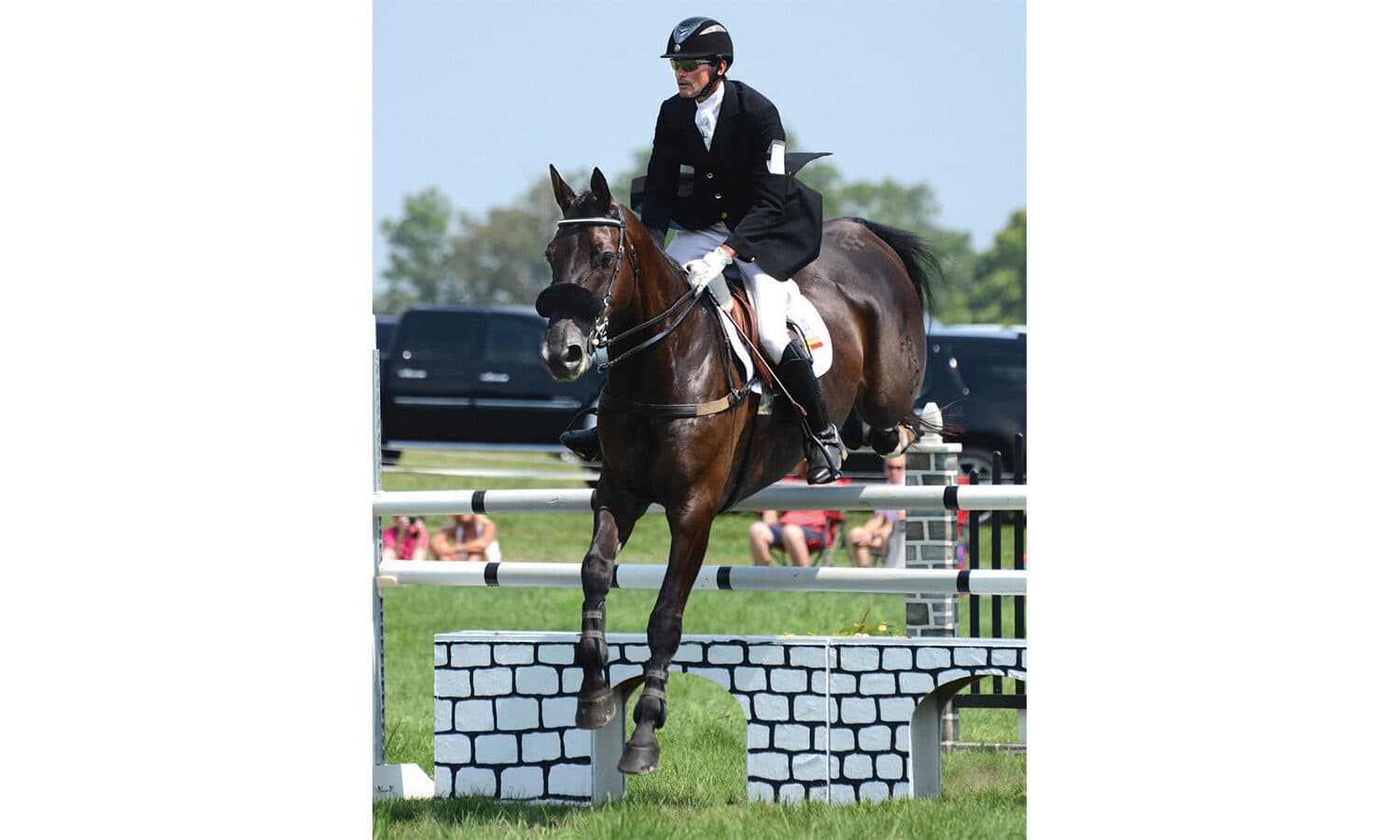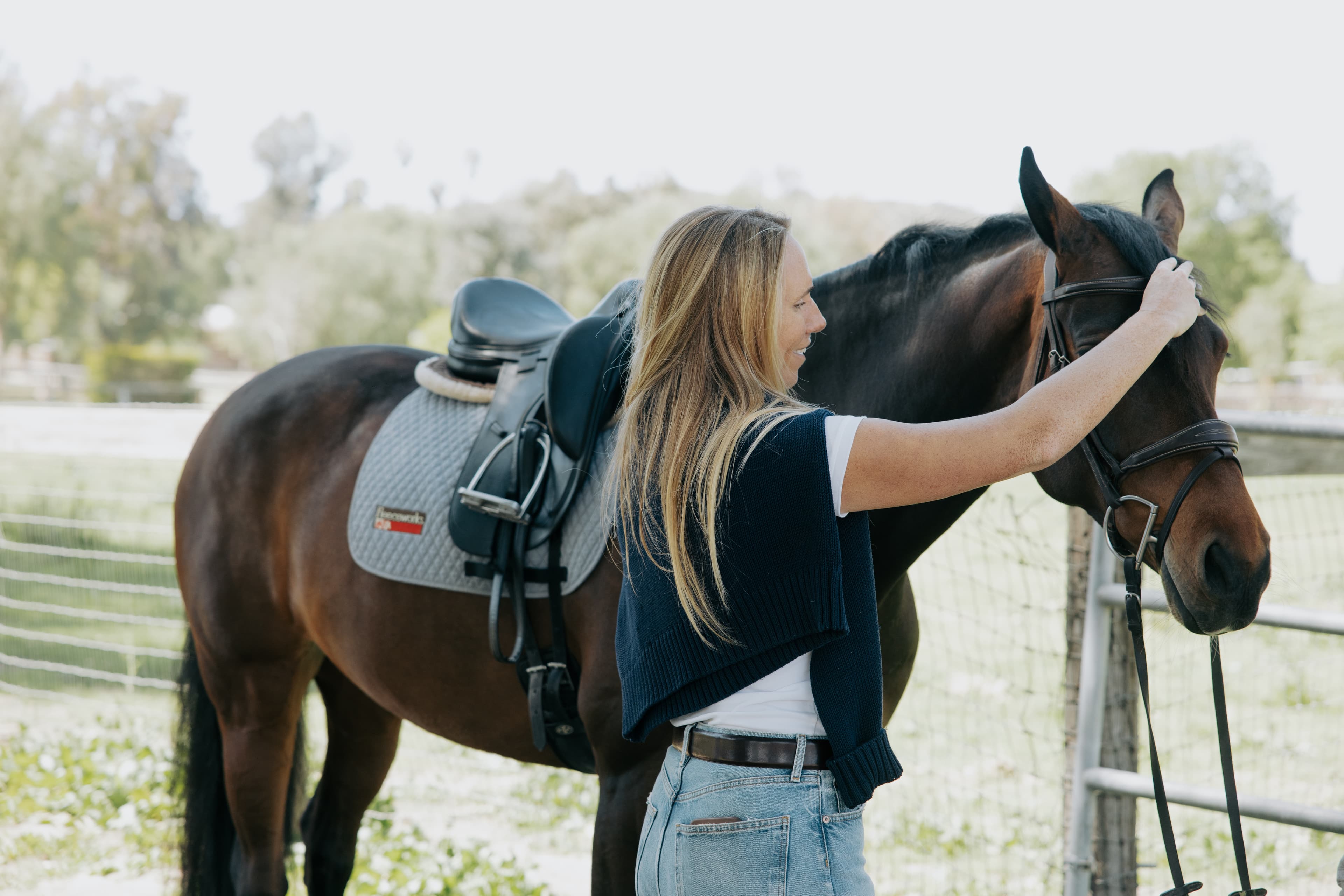Grid Pro Quo with Danny Warrington

Ready to spice things up this winter training season? Do you want to use being stuck in the arena as an opportunity to fine tune your riding? In this series, we are revisiting some of our favorite Grid Pro Quo articles from Eventing USA to help you use the off-season to your advantage and keep you and your horse in tip-top shape for when it's time to get back out there. Click here to check out other past Grid Pro Quo exercises!
WHY:
While I love traditional trot grids, I like this “fives” exercise because of everything it does for the rider. First off, unlike traditional trot grids where the jumps slow the horses down, this grid teaches the rider how to create the half-halt themselves. Second, as some other professionals have mentioned in previous columns, it is always good to practice canter grids since all of your coursework in competition is done at the canter.
Finally, I have found this exercise to really help boost the rider’s confidence. When you are looking down this long line of fences, it can look imposing, but after you break the exercise down and take it one jump at a time, it is quite doable. Then, when you have successfully completed the exercise, you look back and feel good about what you have accomplished.
HOW:

This exercise is best to set up outside in an open field. If you do not have enough space, you can do this exercise with a minimum of three fences.
You want to start this exercise with a simple cross-rail as the first fence. The height can vary depending on your comfort level, but I would not make it any bigger than 2’6” to start. You will want to trot in and halt before you reach the midway point to your next fence, which you can mark off with a line in the sand or a cone set off to the side. This may seem impossible at first, but realize that you have a full two strides to create this halt. While you cannot take your time necessarily, you can land quietly and then sit down in the saddle and quietly ask for the halt. If your horse blows through your halt transition, rein back until you are where you want to be. Repeat this exercise until you are easily halting before the midway point; for some horses this will only take one or two repetitions, for other horses you will have to repeat this starting exercise six or more times. Only then should you add in the second fence, and here is where it is really up to you what you set up.
If you are a more novice rider, then you can set up another cross-rail for your next fence. If you are a more experienced rider, you can change the first fence to a vertical and then continue on with verticals. The point is that this exercise is not about the fences themselves, but what happens in between the fences. Therefore, if you are most comfortable with cross-rails, then set up all cross-rails. If you are most comfortable over 3’6” verticals, then set that up.
As you are going through the beginning portions of this exercise, you are waiting to feel your horse prepare for the halt on his or her own. After you set up your second fence, come through another time or two and halt after the first fence. Oftentimes a horse will see a jump in front of them and make a move towards it, so you want to make sure that your horse waits for you after each fence. This might mean that you have to wait a moment or two until your horse is standing stock still and takes a breath. Once your horse prepares himself to halt after the first fence, you can land, half-halt, and continue on to the next fence. If your horse ever lands and does not respond to your half-halt, halt and repeat until he is listening again. Remember that at first you are doing this all at the trot, regardless of fence height.
You can start cantering into the exercise once you are quietly jumping the first two fences, but the same rules apply: If your horse lands and runs through your half-halt, simply halt. If your horse does not halt until you are past the midway point, then rein back to that point. It is important to never get impatient with your horse through this exercise. Most good horses want to go to their next fence with or without you, so it can be confusing for them at first to now be asked to halt before their next fence. Keep it simple and explain the exercise to them. Even if you need to break it down and just canter over a pole on the ground and then halt, go ahead and do that. I would rather riders take that time than fight with their horses through the exercise.
Once you are cantering through the first two fences, you can go ahead and add in the remaining ones. The hope is that your new and improved half-halt will continue to work after each fence. If it ever does not work, throw in a halt and trot or canter off to your next jump. By the end of this exercise you will find yourself riding very quietly—but still very forward—to the fences. Your horse will learn to not rush between fences but to instead wait for your cue.
The first time you do this exercise, the simple five strides between each set of fences will be all you do. If you want a bigger challenge for the future, you can play with the striding between the fences. I typically do not try to put more than six strides between each jump, but for added complexity, you can put five strides between the first two jumps, then six strides between the next set, then back to five strides, etc.
The best part of this exercise is that you now have a new tool for use in competition. Riders will realize that they are not helpless while on course, and they can be effective between fences.
About Danny Warrington
A lifelong horseman, Danny Warrington started his career in the steeplechasing world before switching his focus to eventing. Known for his ability to bring out the best in the more troubled and difficult horses, Danny is a popular trainer and instructor who travels throughout the country teaching. Together with his wife Keli, they founded LandSafe Equestrian, which instructs riders how to fall safely.














